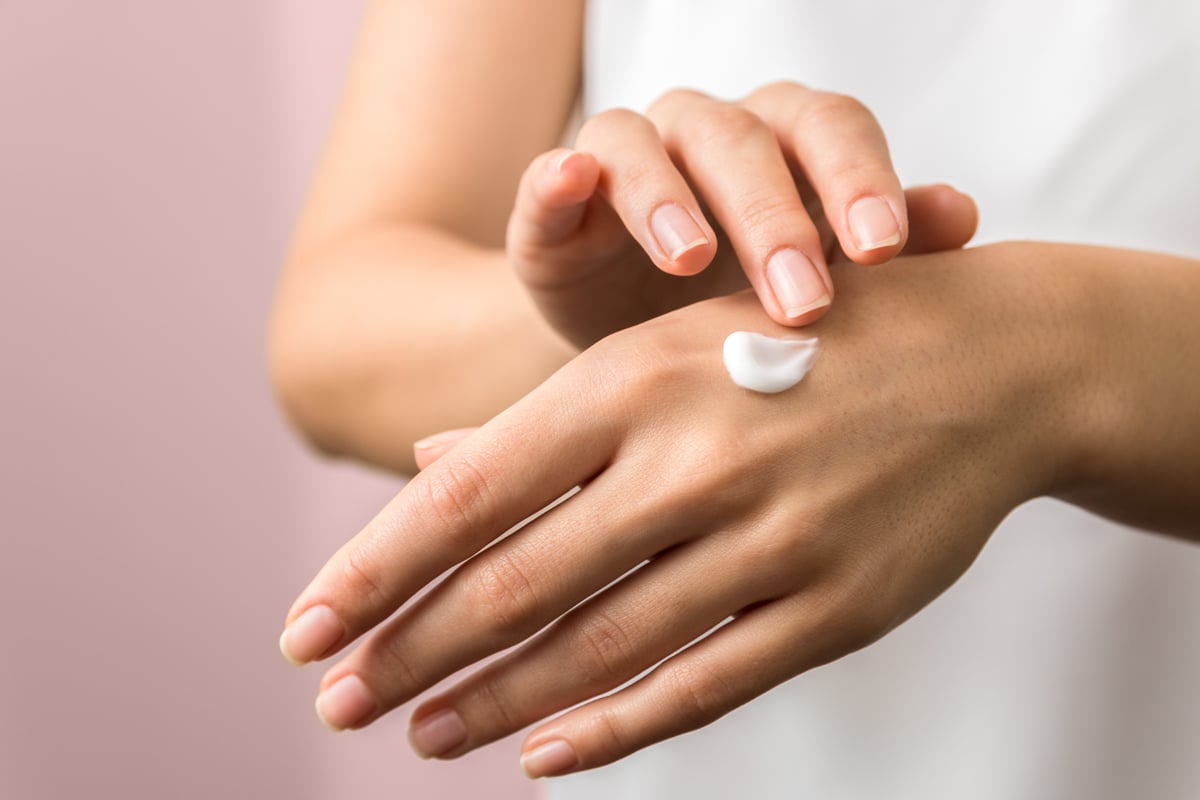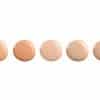Skin. Like it or not, believe it or not, your skin is an important part of what makes you you. The skin is body’s largest organ. Beauty is only skin deep.
By now you have probably guessed this article will be focusing on your skin — specifically, how you can take care of this precious resource and keep it healthy and younger-looking.
Investing in your skin with a proper skincare routine and adopting healthy skincare habits will help postpone visible signs of aging. If you want to maintain a youthful appearance and feel more confident in your skin — and who doesn’t? — read on to discover what you need to know and what you can do to achieve your goals.
- What Is the Correct Skincare Routine?
- What Are the 5 Basics of Skincare?
- How To Determine Your Skin Type
- How Do I Create a Skincare Routine?
- Skincare Product Ingredients Based on Your Skin’s Needs
- What Are the 7 Steps of Skincare?
- Daily Skincare Routine At-Home Tips
- Skin Areas You Shouldn’t Forget To Treat
- Final Thoughts
What Is the Correct Skincare Routine?
The true beauty of humans is that there is no cookie-cutter solution to all of our needs and problems. Everyone has their own specific skin type and care needs, so you need to tailor your treatment regimen to treat the root causes of your individual concerns. In addition to the environment where you live or seasonal changes, other things that can affect your skin include genetics, stress, hormonal changes, and diet.
What Are the 5 Basics of Skincare?
If you don’t have a skincare routine and don’t have a clue about how to build one, just start with these five basics: cleansing, exfoliating, toning, moisturizing, and applying sunscreen.
If you already have a basic skincare routine and are ready to go expand it, you can start incorporating skincare products that will tackle your specific skin problems. You must be alert to spot the right product for your specific problem area. Not every skincare product you see at the department store is necessarily good for your skin or for all of the various issues that might need to be addressed.
How To Determine Your Skin Type
To find products that best suit your skin, you must first determine your skin type: normal, dry, sensitive, oily, or combination.
Normal skin refers to skin that is not excessively dry and excessively oily. It has little to no imperfections, small pores, and minimal sensitivity.
Dry skin is characterized by looking dull, rough, patchy, and scaly. It can also feel itchy, irritated, and less elastic. Additionally, it may show more signs of aging like fine lines.
The sensitive skin types may experience, dryness, redness, itching, and burning.
Oily skin types may have large and clogged pores, blackheads, or pimples. Moreover, it may look dull, shiny, thick, or greasy.
Those with combination skin types may have some dry areas and some that are oily. For instance, people with this skin type may have an oily T-zone and dry cheeks. The T-zone refers to the forehead, nose, and chin areas. Combination skin may have large, clogged pores and blackheads.
How Do I Create a Skincare Routine?
After discovering your skin type, you can tailor your treatment plan to meet your particular needs. Avoid copying other people’s daily skincare practices. As noted earlier, products that work for some people might not work for you.
While your skin is the largest organ in the body, the brain is still the most important. That holds true for this process as well. Reading product descriptions can help you see if they target your skin problems. In addition to reading skin treatment labels, researching the products’ ingredients will let you discover what they do, how they work and whether they are right for the targeted skin issue.
There are certain ingredients you should avoid.
In this process you will need to take a “rifle” approach and not a “shotgun” one. Focus on solving one skin problem at a time. If your major concern is acne, focus on using products that will address your acne.
After you address one skin concern and see the improvement you want, you can move on to treating your next skin issue. If the products you are using are not working or are causing allergic reactions, scrap them and try something else.
Trial and error is not necessarily a bad thing. It has been said that we learn more from our mistakes than from our successes.
A dermatologist can help you build your perfect skincare routine by recommending the best skin products and prescribing medications for your specific skin needs.
Here are a few helpful questions you should consider before building your skincare routine:
-
Is your skin normal, dry, sensitive, oily, or a combination?
-
What are your skin issues? Which are most important to you?
-
What ingredients should you look for when searching for skincare products?
Skincare Product Ingredients Based on Your Skin’s Needs
The key to successful skincare is using the right products. This is one of those “it’s a blessing/it’s a curse” situations, because there are many, many skincare options available. Using the hints above will help you whittle that number down, but the “magic potion” won’t just pop up.
Before you pick those new products, be sure you know what skin issue is first on your to-do list. Once you’ve picked your No. 1 concern, you can try out products designed specifically to address that problem.
Following is a list of dermatologist-recommended ingredients to improve your skin’s appearance and health.
Products Ingredients for Acne
In their Youtube channel Doctorly, dermatologists Dr. L.J. Maxfield and Dr. Muneeb Shah recommend retinoids, as they combat many of the causes of acne. The best over-the-counter retinoid they recommend for acne is the topical medication Adapalene.
They endorse the Adapalene Differin Gel and La Roche Posay Effaclar Adapalene Gel for acne. Other ingredients they recommend for acne include benzoyl peroxide and salicylic acid. They advise that not all of these products may work for you, and some may irritate your skin.
Be aware of possible unwanted side effects. For example, benzoyl peroxide may bleach your facial hair — including your eyebrows. When in doubt, ask a dermatologist about these ingredients.
Product Ingredients for Fine Lines and Wrinkles
To treat fine lines and wrinkles, Dr. Maxfield and Dr. Shah recommend trying retinoids, collagen-building ingredients, antioxidants, hyaluronic acid, and glycerin. They also encourage you to use sunscreen with a broad spectrum SPF of 30 or more.
Product Ingredients for Uneven Skin Texture
To improve uneven skin texture, Dr. Maxfield and Dr. Shah endorse using retinoids and exfoliants. They specifically encourage using exfoliants with lactic acid, salicylic acid, glycolic acid, and mandelic acid.
Product Ingredients for Dyspigmentation or Hyperpigmentation
Dr. Maxfield and Dr. Shah also recommend retinoids for treating pigmentation issues. They also recommend azelaic acid, vitamin C, niacinamide, and hydroquinone for hyperpigmentation.
Hydroquinone is a controversial ingredient that was banned in some countries due to possible cancer-causing concerns. Maxfield and Shah advise talking to a dermatologist about hydroquinone, as it may cause permanent skin discoloration with long-term use.
Other points to remember are that it can take several months to see improvement when treating hyperpigmentation, you should wear sunscreen for your hyperpigmentation treatments to work, and you should avoid retinoids if you are pregnant or breastfeeding.
What Are the 7 Steps of Skincare?
After you have incorporated the five basic skin care products and any rejuvenating products tailored to your skin imperfections, you could have about seven steps in your total routine. You could reduce or increase the number of steps, depending on your preferences and skin goals. You may decide to use some steps only a few times a week.
A good rule of thumb is to apply your skin care products from the thinnest to the thickest consistency. Here is the recommended checklist:
-
Cleanse
-
Exfoliate
-
Toner
-
Serums and Retinols
-
Moisturize
-
Sunscreen
While the use of these products seems simple, as any parent who has sat up at midnight on Christmas Eve can tell you, it doesn’t hurt to “read the instructions” before starting a project.
Here’s a little more detail for those seven steps.
1. Cleanse
Cleansing your face is one of the most common steps that many people do first as part of their skincare routine. You’ve probably heard several dermatologists say to cleanse your skin both day and night, but not all skin experts agree. Some recommend frequency of cleansing based on your skin type.
If you have dry skin, you may only want to cleanse your skin once a day to avoid removing the natural oils that hydrate your skin. Cleansing more than once a day may also be irritating for people with dry or sensitive skin.
If you decide to cleanse once a day, do it at night to remove any gunk build-up and makeup from your day. You can then wash your face with water in the morning to remove any residue from your night skincare products. If you have dry to normal or sensitive skin, you may want to use a gentle or mild cleanser that won’t be harsh on your skin and provides hydration.
If you have oily or acne-prone skin, it’s not advisable to wash your face more than twice a day, as you don’t want to dry out your skin. Instead, opt for a foaming cleanser that reaches your pores and removes excess oils. People with combination skin may also want to use foaming cleansers that remove excess oils and won’t dry out their skin.
Avoid washing your skin with soap bars, as they can dry and irritate your skin. Instead, invest in a cleanser to remove sweat, makeup, dirt, and pollutants from your face. Using a cleanser can also help you remove excess oils on your face.
2. Exfoliate
After removing any skin impurities with a cleanser, you can exfoliate to scrub away dead skin cells on the surface of your skin. Exfoliation methods include chemical or mechanical exfoliators. The mechanical exfoliator involves removing dead cells with a brush or other tools, whereas chemical exfoliation uses acids to eliminate dead skin build-up and unclog pores.
You should exfoliate using the method that best works for your skin type. For example, people with dry, acne-prone, or sensitive skin may want to use a chemical exfoliator, as it is more gentle than mechanical methods. Some dermatologists, like Dr. Shah, recommend not using mechanical exfoliants on the face because they can be too harsh on facial skin.
How often should you exfoliate? Most experts say you should exfoliate two to three times per week, but it depends on your skin type and how much your skin can handle. If you have dry or sensitive skin you may prefer to exfoliate only once or twice a week. Oily skin types may need to exfoliate more times. You don’t want to over-exfoliate because it can damage and irritate your skin.
Should you exfoliate in the morning or night? That, too, is a matter of debate. Some skin experts recommend exfoliating in the morning while some claim you should leave that for the night. Both morning and night exfoliation offers benefits.
If you exfoliate at night, your skin will better absorb the skin care products you apply at night.
Exfoliating in the morning will help you remove dead skin cells and leave you with smooth, fresh skin to start your day. However, exfoliating too hard or often in the morning may leave your skin more exposed to the sun and pollutants, as you are removing the surface layer of skin which serves as a protective barrier.
3. Toner
A facial toner can help balance your pH levels, provide a deeper cleanse, and boost the effectiveness of your skincare products. It can also remove excess oils and help shrink pores. You can apply toner both in the morning and at night, but not all people use them. If you decide to incorporate a toner into your skincare routine, make sure to find one that best suits your skin type.
4. Serums & Retinols
After you apply toner, you can start applying serums that target your specific skin concerns. You may also use retinol, a type of retinoid that boosts cell and collagen production, reduces hyperpigmentation, improves uneven skin tone and texture, and diminishes lines and wrinkles. Do not take retinol if you are pregnant or nursing.
With retinol, your skin may feel dry, irritated, and flaky because it may take a few weeks for your skin to get used to your retinol prescription treatment. To help prevent irritation, some skin experts may recommend applying retinol after you moisturize.
It is better to apply retinol products at night. Make sure to apply sunscreen before going outside, as the sun can undo the progress of your retinol.
If your skin is too sensitive to retinoids, growth factors are a suitable alternative because they are more gentle on your skin than retinol. Growth factors are molecules that promote cell growth and tissue healing. They can help boost collagen and elastin production, providing youthful, healthy skin.
5. Eye Cream
As we age, the skin around our eyes often shows the first signs of aging. That’s why you shouldn’t overlook your eyes when doing your skincare routine. Apply an eye cream at night to help prevent and combat signs of aging, such as fine lines and wrinkles. It can also help with dark circles, eye puffiness, and dryness.
Some people don’t use any products under their eyes because it irritates their eyes. Undereyes get thinner and looser over time and may darken. Investing in a good eye cream will help you tackle dark circles and wrinkles.
If you have dry, sensitive skin and want to skip the eye cream, apply a moisturizer and then apply Vaseline to protect and retain moisture under your eyes. Vaseline won’t help with dark circles or wrinkles.
6. Moisturize
If you have oily skin, you may still want to moisturize to ensure you are hydrating your skin. Your natural oils may lock in moisture, but they do not hydrate your skin. In other words, oily skin does not equal hydrated skin. Thus it makes sense to invest in a lightweight, oil-free moisturizer that will hydrate without adding excess oils to your skin.
7. Sunscreen
When doing their morning skincare routine, people often apply sunscreen last. Applying a broad spectrum SPF of 30 or higher is essential to protecting your skin from the sun’s UVA and UVB rays. Using sunscreen can help prevent signs of premature aging, skin cancer, and sunburn.
Daily Skincare Routine At-Home Tips
Now you know the basics of establishing a treatment regimen to keep your skin looking healthy and younger.
Step one is to treat problems one at a time. Once you have selected a product to address that problem, be consistent with the treatment. Allow yourself about six to eight weeks to see the differences a treatment product is having on your skin, according to the New York City cosmetic dermatologist Dr. Shereene Idriss.
“Your skin has a 28-day cycle on average,” Dr. Idriss says, “so you’re going to need to double that time to see a difference and to see a change.”
Additionally, skin care is not limited to only products. You can also incorporate certain, healthy habits that can help you achieve and maintain glowing skin.
Skin care habits that can help your skin stay healthy and hydrated include drinking plenty of water, avoiding smoking, consuming a healthy diet, and managing stress.
Skin Areas You Shouldn’t Forget To Treat
During their skincare routine, people often neglect their lips and ears. Don’t forget to apply your skin care products to your external ears. Lips can become dry and chapped, so remember to exfoliate, protect, and moisturize them. Yes, your lips need sunscreen too, but make sure you clean them first.
Check out these lip scrubs for soft, clean lips.
Final Thoughts
Now that you know your skin type and the skin issues you want to address, you are ready to create your skincare routine. Whether you’re building it as a preventive measure or as a corrective measure, you should always invest in your skin. You should choose products that will suit your skin type and actually make a difference in the targeted areas you want to treat.
The saying borders on cliche, but is still very true, that you need “to be comfortable in your own skin.” However, there’s nothing wrong with looking good while being comfortable.










